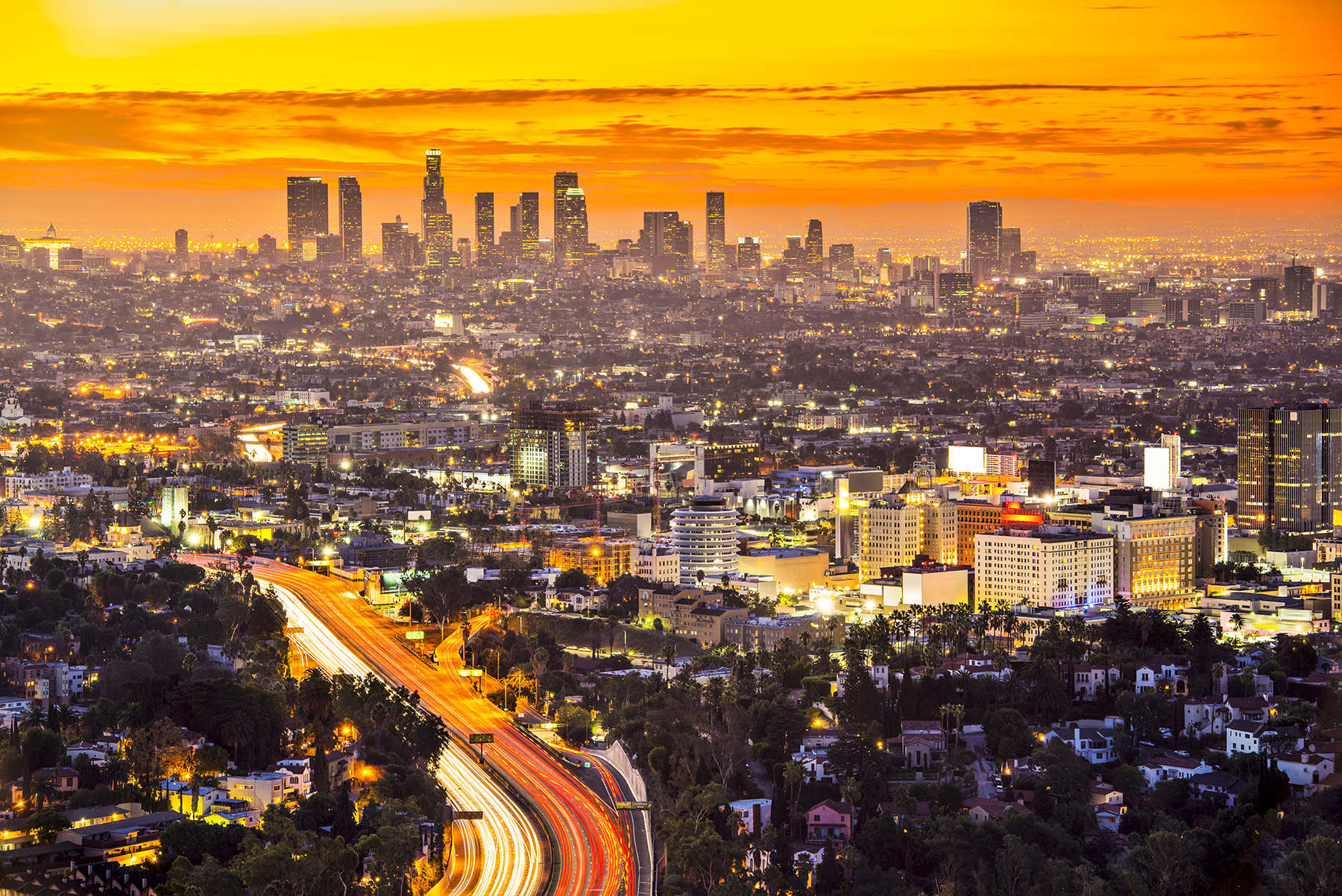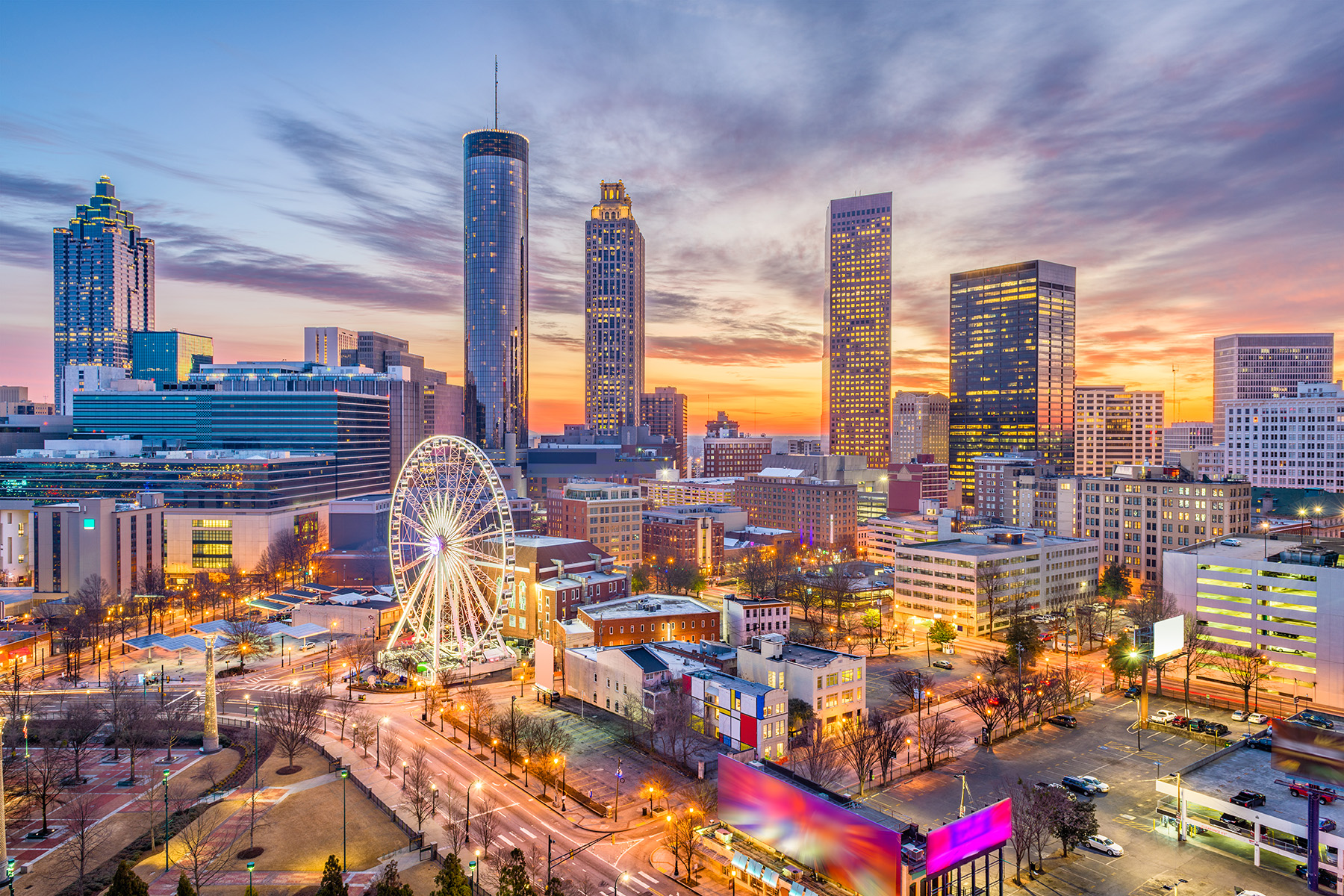
By Celeste C.B. Bennett
Each year ASCE releases its list of best places for civil engineers. This year, Civil Engineering explores how the top three cities for 2024 incorporate real-life ideas that will create thriving cities of the future.
The future-forward infrastructure and developments explored in ASCE’s latest IMAX film Cities of the Future might seem too far away to believe. And if they do not yet exist, it might be hard to imagine how they will become reality. But these developments are already being incorporated into the conversations civil engineers are having about future cities.
The concepts seen in Cities of the Future were brought to life through a yearlong series of conversations between MacGillivray Freeman Films and ASCE members. What started as basic themes and scenes morphed into what the movie explores: real-life ideas that will mark how people will live and work 50 years in the future.
Future cities are being created one idea and conversation at a time, with thousands of engineers contributing their own voices and experiences to the goal of seeing these cities thrive. While each city is different, with its own climate, people, and stories, they all offer unique opportunities for civil engineering advancements.
Best Places rankings are based on three factors: salary, job availability, and cost of living. This year’s top 10 are: Los Angeles, Houston, Atlanta, New York, Washington, Denver, Chicago, Boston, Phoenix, and Dallas.
This article will examine the ways in which the top three cities have begun to incorporate future-forward concepts into their infrastructure.
Los Angeles

At approximately 3.8 million people, Los Angeles is a densely packed city with a bold environmental goal: a 100% carbon-free power grid by 2035. This means engineers in LA must keep clean energy and sustainability in mind for every project they undertake. Cities of the Future explores the need for civil engineers in every city to view sustainable and clean power as a top priority. There are numerous clean energy options — and the number is growing — thanks to advancements and developments happening every day.
Greg Sebourn, P.L.S., M.ASCE, a principal and geospatial engineer in Stantec’s LA office, says the firm has a large power and energy group that develops and mobilizes battery storage systems for buildings in LA and provides other environmental services.
“In Southern California, we have very aggressive environmental regulations that constrain how we produce electricity. There are very few natural gas plants, many of which have been decommissioned,” Sebourn notes. “The plants left in operation are employed only at peak energy usage; the city will fire them up for an hour or two and then back them off to avoid creating excess greenhouse gases.”
The key to reliable clean energy is being able to store that energy, Sebourn says, so battery storage has grown tremendously to keep up with demand. Engineers in LA are exploring how to incorporate battery storage into existing buildings. He expects this concept to become commonplace in LA: Photovoltaic walls and roofs, as well as wind power, will capture energy during the day, and that energy will be stored in a battery on or in the building. Then, that stored energy will be available for use day or night or during peak energy usage hours when power grids tend to be overwhelmed.
Sebourn expects big changes in transportation infrastructure in future cities as well. One type that he expects will come to LA is electric vertical takeoff and landing aircraft. California-based company Archer Aviation aims to bring its eVTOL to market for public use as early as 2025. Dubbed Midnight, it takes off and lands like a helicopter, but it looks more like a plane. The idea is that it has a smaller footprint than a full-sized airplane and is more stable than a helicopter, says Sebourn. “It’s an exciting time for metropolitan Los Angeles.”
In California, there are at least two other companies competing with Archer for eVTOL development, Federal Aviation Administration approval, and public implementation of their flying vehicles. Cities of the Future visits Joby Aviation and features its journey to the skies as well as stunning computer-generated imaging sequences that offer a glimpse into small-scale air travel.
Maya Bouchet, AICP, a planner in Kimley-Horn’s LA office, who specializes in technology and multimodal transportation, also sees growing ground transit, in addition to bicycle and pedestrian access, as part of her city’s future. “As a region, safety is an important goal and something that we really want to enhance,” she says. “We have a transit system that we are building out. Engineers and planners are trying to facilitate first-mile/last-mile connectivity. One of the ways you can do that is through bicycle and walking facilities.”
She says cities, including LA, are taking a more balanced approach toward transportation to better accommodate automobiles, buses, bikes, and pedestrians into the constrained spaces that already exist.
In regard to pedestrian safety, the city plans to install smart cameras that can detect pedestrians and make their intersection crossings safer. “Kimley-Horn is involved in transit signal priority, so we can make sure that we enhance transit operations not only through roadway configuration but also at the traffic signal,” Bouchet says.
And as for electric vehicles, she believes their presence and use will only grow because of expanding electrical charging infrastructure, along with vehicles that run on other types of alternative fuels. As for flying cars, she says extensive infrastructure changes will be required before 2070 to support this mode of transportation.
Houston

Houston is one of the most diverse cities in America. Its plethora of cultures, traditions, and experiences means Houston’s civil engineering scene is equally diverse.
Lee Anne Dixon, P.E., PTOE, STP, is a senior principal in Walter P Moore’s Houston office. She often works with engineering leaders at her firm — and other Houston-area firms — who are from outside the United States. These leaders bring diversity of experience and expertise that creates better outcomes for her clients and their communities. Dixon’s role on projects involves analyzing land use for large-scale campus redevelopments for the oil and gas industry or large retailers.
The type of land use, land location, and dedicated spaces for accessibility and nature are all considered in land redevelopment projects, along with what she calls the “hardscape” or structures. Additional factors for redevelopment projects are parking garage locations, modes of traffic to and from the campus, pedestrian and bike paths, roadway access, and resource use.
“We’re looking at revamping companies’ entire footprints and building a new campus experience that’s more sustainable and resilient for the future,” Dixon says.
Dixon serves on the board of the Sustainable Transportation Council, which offers guidelines and resources on building sustainable, efficient infrastructure that will serve communities for many years. One thing she has learned is to assess the accessibility of various modes of transportation.
From a systems perspective, civil engineers enable road access for cars, buses, bikes, and pedestrians, but the way they do that in the future will be different. “Not every street needs to be designed for every mode. Solutions for each mode can be provided across the mobility system,” she says.
This ties into forward-thinking engineering depicted in Cities of the Future because multimodal transportation will be standard by 2070. But bringing Houston into the transportation of the future, like LA, comes with its own set of challenges. “Houston is a very expansive city that has sprawled because it developed mostly after the 1950s when there was private auto accessibility,” Dixon explains. “Everyone wanted their land, their property, their piece of the world, and accommodating those desires led to Houston expanding from (its) core.”
Today, because of the city’s growing international influence, residents desire more mass transit options and would prefer them over cars. So, looking toward the future, Dixon says the challenge will be to “right-size the transit solution for the ridership.”
She says the city will require fewer fixed guideways and more bus and other rapid transit options that can be implemented faster and more affordably than a fixed-rail system. Houston’s residents also expect more transit solutions than the city has available right now, so engineers are seeking to quickly and skillfully “integrate effective transit options across such a giant footprint,” Dixon says. This will be especially important as Greater Houston’s population is expected to grow to nearly 13 million by 2050.
Transportation in the future will not be dictated as much by specific projects or modes but by how much control agencies will have over those modes and the technologies required to run them. These modes and technologies will be safer and include autonomous vehicles and smart roads that control car movements similar to the technology used in automatic walkways in airports.
“We trust a lot of humans with our safety. There is a lot of room for human error. I imagine a future where it will be much safer not to have humans behind the wheel in control of where their car is going,” Dixon says.
An additional way to create resilient and sustainable infrastructure is through building materials, according to Thornton Tomasetti’s Robert Rogers, P.E., a vice president in the firm’s Houston office. “The big push in civil engineering from a forward-looking standpoint is sustainability,” he says.
Rogers’ projects often use two environmentally friendlier materials: sustainable concrete and mass timber. Sustainable concrete could mean adding lower-carbon-content cement to concrete or injecting the concrete itself with carbon, which reduces a project’s overall emissions.
Mass timber production involves sustainably growing trees, extracting raw materials such as wood or wood fiber, and then using the raw materials to create building components. The mass timber product used in many construction projects is thick, layered sections of glue-laminated and processed wood board or fiber.
Improved building aesthetics are an added benefit of using timber on projects in future cities, a design choice highlighted in the film. “Architects and interior designers have done studies on biophilic design, which is bringing nature inside the building. It’s a little bit outside my realm as a structural engineer, but biophilic design positively changes the feeling of the workspace,” Rogers says. The timber remains exposed in the final design.
Another concept gaining traction in structural engineering is modular construction, Rogers says, because it is standardized, streamlined, and safer for crews (due to less time spent on sites). It implements mass manufacturing models for building and construction projects.
Until the last few years, mass production of large-scale buildings was infrequent. Traditionally, teams went to construction sites with all the materials and equipment they needed and constructed a building completely on-site. Modular construction significantly improves quality control and reduces field time because all parts are built off-site and then connected in the field.
Atlanta

Atlanta has historically been the poster child of sprawl, with packed highways and a downtown rife with office buildings. The city has had a pattern throughout the last few decades of tearing down old buildings to build new ones, but that is changing, says Kimley-Horn vice president Rob Ross, P.E., who works in the firm’s Atlanta Midtown office.
Cities of the Future reveals cities in 50 years will be a mix of older, remediated structures along with new infrastructure. In Atlanta, according to Ross, that’s what’s already happening.
“What I would expect to see in Atlanta in the future is the old is new again,” he says. Bringing back the old would involve adaptive use and reuse of dilapidated spots in the city along with creating newer, modern structures to support growth. One successful reuse spot is Ponce City Market. Developed from an old warehouse distribution center, the market has become a hub with residential opportunities, live music, restaurants, and weekly events.
Ross explains that around the market — next to the old, modified warehouse — are some of the newest architectural projects, such as Fourth Ward, with beautiful, modern designs. He says melding the old and new invites people back into the city to connect with Atlanta history while encouraging new ways of interacting with all the experiences the city offers.
“One thing I am watching is the modification of office space to residential. It is a very difficult thing to do, but I see that as one of the ways to adapt over time,” Ross notes. “We’re still learning how to do that well, but I know Atlanta will be at the forefront because we’ve always been a leader in development and growth.”
Adaptive and reuse projects are for more than buildings, though. Civil engineers in Atlanta are beginning the decadeslong process of redesigning the city for multimodal transportation, just as LA, Houston, and other cities are.
Ross says the old ways of traveling — biking, walking, and mass transit — are growing exponentially and will continue for years. “It used to be that a car represented freedom; you got your driver’s license and could go drive on your own. Now, drivers can feel almost trapped in their cars in traffic,” Ross explains. “The freedom now is walking, and so in Atlanta you see a lot more emphasis on multimodal design.”
Higher-density cities are exploring turning traffic lanes into wider sidewalks and bicycle paths to make space for numerous modes of transportation, and Atlanta has already begun to do so. Furthermore, the addition of parks, natural areas, and green spaces will maximize user experience.
A key focus in the film is incorporating green spaces into future cities — like transforming highway lanes into parks or biking trails, adding walls of plants to building exteriors, and incorporating plants in general into aspects of each design. Stantec senior principal Jeff Rice, P.E., ENV SP, agrees.
He expects civil engineers of the future to focus on the idea of nature design. “Green space and a connection to nature in both the built and natural environments are critical to (achieving a sense of place) and establishing connections and a feeling of ownership,” according to Rice, who is based in Stantec’s Charlotte, North Carolina, office. “Parks and green spaces help bring intrinsic value to all those who use them. It is important for us as engineers to seek the opportunity to explore more green in our builds, especially in the city of the future.”
Civil engineers design and maintain aspects of day-to-day life that the public will never think about but that make their lives complete, including indoor and outdoor environments. Rice says this is what is supposed to happen when civil engineers do their work well. “We understand how what we design and build today is a critical part of delivering sustainable and long-lasting solutions for tomorrow.”
Rice encourages civil engineers who will be designing cities of the future to consider the impacts of each project they work on because projects will grow and compound in number over time to “define what our cities are and will become.”
The common thread
No matter which city these engineers work and live in, they all emphasize the role of educating their clients when designing for the future. Ross and Sebourn say a large part of their work is discussing the numerous infrastructure options with clients and building owners, presenting the less traditional, forward-thinking, environmentally friendly, and long-term cost-saving options.
A large part of education, too, is helping clients see that project success is not solely about how much it will cost. Often, projects that are forward thinking cost more upfront and are hard to envision, and unless clients can reference successes of similar projects, ideas of the future like renewable energy, adaptive reuse, and sustainable materials can be hard to sell.
“No one wants to be a guinea pig,” says Ross. But guinea pig projects are slowly happening in industries across the country. As engineers help clients see the benefits of initiating newer, forward-thinking infrastructure, cities will, one project at a time, become cities of the future.
Celeste C.B. Bennett is the writer/editor for Civil Engineering.
This article first appeared in the May/June 2024 issue of Civil Engineering as “The Best Places for Civil Engineers 2024.”



